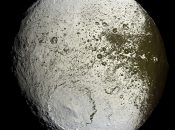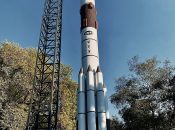Irregular galaxies are captivating celestial formations characterized by their lack of defined structure or symmetrical shape. They deviate from the distinct spiral or elliptical shapes typically observed in other galaxy types. Instead, irregular galaxies exhibit a more chaotic and irregular appearance, often lacking defined arms, bulges, or a central nucleus.
These galaxies are commonly divided into two primary categories: Irr-I galaxies, which show some irregularity but have hints of structure, and Irr-II galaxies, which appear more disorganized and lack any recognizable structure. Their irregularity can result from gravitational interactions with neighboring galaxies, collisions, or disturbances within their environments.
Irrigular galaxies often harbor vast regions of active star formation. The absence of a well-defined structure allows gas and dust within these galaxies to clump and coalesce, triggering the formation of massive stars. These newly formed stars emit intense radiation, illuminating the surrounding gas clouds and giving irregular galaxies their characteristic glow.
One famous example of an irregular galaxy is the Large Magellanic Cloud (LMC), a satellite galaxy of our Milky Way. The LMC boasts striking nebulae and clusters, showcasing ongoing stellar birth and evolution. The Small Magellanic Cloud (SMC) is another neighboring irregular galaxy, similarly characterized by its irregular shape and active star-forming regions.
Studying irregular galaxies offers astronomers valuable insights into the dynamics of galaxy formation and evolution. Their irregularity and ongoing star formation processes provide opportunities to explore the effects of various factors, such as gravitational interactions, on the development and evolution of galaxies in the vast and complex universe.

Irregular galaxy NGC 4485
To know more about irregular galaxies, let’s take a look at these 28 interesting facts about irregular galaxies.
- Lack of Structure: Irregular galaxies deviate from the typical spiral or elliptical shapes seen in other galaxy types, lacking defined arms or a central nucleus.
- Formation Mechanisms: Their irregularity often stems from gravitational interactions, collisions, or disturbances within their environments.
- Classification: Irregular galaxies are categorized into two primary types: Irr-I, showing some structure, and Irr-II, which appear more chaotic and disorganized.
- Active Star Formation: They are often rich in gas and dust, fostering regions of intense star formation due to the absence of defined structures.
- Young Stellar Population: Irregular galaxies commonly contain young and massive stars formed from the dense gas clouds within them.
- The Large Magellanic Cloud (LMC): One of the most famous irregular galaxies, a satellite galaxy of the Milky Way, displaying active star-forming regions and nebulae.
- The Small Magellanic Cloud (SMC): Another neighboring irregular galaxy, exhibiting similar irregularities and stellar nurseries.
- Dwarf Irregular Galaxies: Some irregular galaxies are classified as dwarf irregulars due to their smaller size and lower luminosity.
- Lack of Symmetry: Unlike spiral galaxies with distinct arms or elliptical galaxies with a more uniform shape, irregular galaxies lack symmetry or specific rotational patterns.
- Gravitational Interactions: Interactions with neighboring galaxies can result in the irregular shapes observed in these galaxies.
- Bridge of Stars: Some irregular galaxies exhibit “bridges” of stars connecting them to nearby galaxies, indicative of ongoing interactions.
- Distinct Colors: Irregular galaxies often display a mix of different colors, indicating varying ages and compositions of their stellar populations.
- Active Galactic Nuclei (AGN): While less common, some irregular galaxies may harbor active galactic nuclei, emitting powerful radiation due to supermassive black holes.
- Low Surface Brightness: They typically have a lower surface brightness compared to spirals or ellipticals, making them challenging to observe.
- Galactic Tidal Forces: Tidal forces from gravitational interactions can distort the shapes and structures of irregular galaxies over time.
- Hubble’s Classification: Edwin Hubble’s initial classification system included irregular galaxies as one of the main categories, reflecting their unique nature.
- Faint Emission Nebulae: Irregulars often showcase faint emission nebulae, such as HII regions, where new stars are actively forming.
- Observational Challenges: Their irregularity and varied shapes make it challenging to accurately classify and study them compared to more structured galaxies.
- Amorphous Appearance: Some irregular galaxies exhibit an amorphous or patchy appearance without any clear structure.
- Starburst Galaxies: Irregulars can host intense bursts of star formation, leading to classifications as starburst galaxies.
- Local Group Members: Several irregular galaxies are members of the Local Group, a collection of galaxies that includes the Milky Way and Andromeda.
- Low Metallicity: Some irregulars have lower metal content, indicating they formed stars from pristine gas with fewer heavy elements.
- Varied Sizes: Irregular galaxies come in various sizes, from small dwarf irregulars to larger, more massive ones.
- Interaction with Dark Matter: Studies suggest that interactions between irregular galaxies and dark matter play a role in their evolution and dynamics.
- Numerous Globular Clusters: Some irregular galaxies contain numerous globular clusters, densely packed groups of old stars.
- Challenging Stellar Kinematics: Understanding the motions and dynamics of stars within irregular galaxies poses challenges due to their irregularity.
- Galactic Evolution: Studying irregular galaxies provides insights into the diverse paths of galaxy evolution beyond more structured forms.
- Cosmic Diversity: Irregular galaxies contribute to the cosmic diversity of galaxy types, showcasing the range of formations in our universe.
Irregular galaxies, with their captivating chaos and distinctive lack of structure, stand as celestial anomalies in the vast expanse of the cosmos. Their irregularity, stemming from gravitational interactions and disturbances within their environments, fosters intense regions of star formation, birthing new stars amidst dense gas clouds. Despite their challenging classification and varied appearances, these galaxies offer astronomers a unique canvas to study the intricacies of galaxy formation and evolution. They represent a crucial piece of the cosmic puzzle, showcasing the diversity of shapes, sizes, and evolutionary pathways that galaxies can undertake, enriching our understanding of the ever-evolving universe and the forces shaping its celestial wonders.





